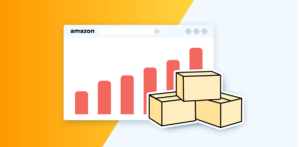Maximizing Profitability Part 3: How Often Should You Revisit Your Product Catalog?
One of the key elements to sustained success in the eCommerce world is the ability to adapt and innovate. This is especially evident in the realm of product management. Your product catalog is the cornerstone of your brand—it's what you offer to your customers, what sets you apart from competitors, and what drives your profitability. But how often should you revisit this catalog to ensure it's optimized for maximum profitability?
The Importance of Product Management & The Product Life Cycle
It's crucial to recognize that a product catalog is more than just a static list of items—it's a reflection of the constantly shifting landscape of eCommerce. Market trends, consumer preferences, and competitive pressures are constantly evolving, shaping the demand for products and services. Brands must adapt and evolve their offerings to remain competitive and meet the evolving needs of their target audience.
Central to understanding the dynamics of product management is recognizing the concept of the product life cycle. Each product goes through a series of stages, from introduction to growth, maturity, and eventually decline. This cycle can be visualized using the graph to the right. At each stage, the product faces different challenges and opportunities, and its performance may vary accordingly.
In the introduction stage, a new product is launched into the market, often accompanied by high initial costs and limited sales as consumers become aware of its existence. As the product gains traction and enters the growth stage, sales begin to accelerate, and profitability increases. During the maturity stage, sales plateau as the market becomes saturated, competition intensifies, and pricing pressures mount. Finally, in the decline stage, sales decline as consumer preferences shift, new technologies emerge, or competitors introduce superior alternatives.
Understanding where each product stands in this life cycle is essential for effective product management. Products in the growth stage may require additional investment to capitalize on their momentum and expand market share, while those in the maturity or decline stages may benefit from strategic adjustments or even removal from the catalog altogether.
External factors such as market conditions, technological advancements, and changes in consumer behavior can also significantly impact the performance of products. Given the dynamic nature of the market, periodic reassessment of the product catalog is essential to ensure its relevance and profitability. By staying attuned to market trends, consumer preferences, and competitive dynamics, businesses can proactively adjust their product offerings to capitalize on emerging opportunities and mitigate potential threats. This requires a combination of data-driven analysis, market research, and strategic foresight to anticipate and respond to changes effectively.
Timing Tips
How often should you revisit your product catalog? The answer isn't one-size-fits-all; it depends on various factors. However, there are some general guidelines you can follow to ensure you're not neglecting your catalog for too long:
- Regular Reviews: At a minimum, aim to conduct a comprehensive review of your product catalog annually. This allows you to assess the performance of each item, identify any emerging trends or opportunities, and make strategic adjustments as needed. It may be necessary to review more often, especially if you have products in the earlier stages of the product life cycle, to ensure they are moving forward in the desired direction.
- Continuous Monitoring: In today's business environment, waiting for an annual review may not be sufficient. Implement systems to monitor key metrics and indicators on an ongoing basis, allowing you to react quickly to changes in market conditions or consumer preferences. Doing so will allow you to keep your catalog as optimized as possible, and maintain or grow your sales during busier periods.
- Seasonal Updates: For brands with seasonal products or offerings tied to specific times of the year, more frequent catalog reviews are necessary. Utilize the time in off-season periods to evaluate and optimize your catalog. Doing so will allow your brand to be prepared during busier peak seasons, and maximize the opportunity for brand visibility and sales.
Strategies for Catalog Optimization
- Data-Driven Decision Making: Base your catalog decisions on data rather than gut instinct. Analyze sales data, customer feedback, market trends, and other relevant metrics to identify underperforming products, emerging opportunities, and areas for improvement. Doing so can result in increased conversion rates and repeat customers. In fact, brands that analyze and implement data from customer analytics are more likely to report outperforming their competitors.
- Portfolio Analysis: Take a holistic view of your product portfolio to ensure it's balanced and aligned with your overall business strategy. Having a diversified portfolio also allows your brand to market to a larger audience, resulting in higher brand visibility and opportunity for sales. Brands with a well-balanced product portfolio achieve upwards of 30% higher revenue growth than those with a less diversified portfolio. Consider factors such as product differentiation, pricing strategy, target markets, and competitive positioning.
- Experimentation and Innovation: Don't be afraid to experiment with new products, features, or variations. Innovation is key to staying ahead of the competition and capturing new market opportunities. In fact, innovation-driven economies are more resilient to economic shocks and better positioned for long-term growth. Having an innovative strategy and approach can help your brand remain steadfast against the ever-changing eCommerce landscape and develop long-term relevance. Be sure to monitor the performance of these experiments closely and adjust course as needed.
- Customer-Centric Approach: Keep the needs and preferences of your customers front and center. Customers are more likely to develop a sense of loyalty toward brands who make them feel important and appreciated. Solicit feedback through surveys, focus groups, or direct engagement to gain insights into what they value most and how you can better meet their needs. As a matter of fact, brands that adopt a customer-centric approach can be up to 60% more profitable than brands that do not. This can be a game-changer for eCommerce brands looking to breakthrough and increase their market share.
- Collaboration and Communication: Product management is a collaborative effort that requires input from various stakeholders, including sales, marketing, operations, and finance. Foster open communication channels and encourage cross-functional collaboration to ensure alignment and buy-in for catalog decisions. Cross-functional collaboration results in new, unique ideas that can help address issues across multiple teams, and result in the best possible solutions. This type of collaboration allows for increased productivity, and can lead to an increase in revenue of 20%. Encouraging open communication between teams can help your brand significantly.
In conclusion, your product catalog is an asset that demands continual attention and optimization to achieve maximum profitability for your eCommerce brand. Through a strategic approach to revisiting your catalog, utilizing data-driven insights, and fostering a culture of innovation, you can ensure that your product lineup stays competitive and attuned to the evolving needs of your customers. It's crucial to understand that there's no universal formula for how often you should revisit your catalog. Rather, prioritize agility, responsiveness, and a customer-centric mindset in your product management approach to effectively navigate the eCommerce world.
More About aiCommerce
aiCommerce is a global digital marketing agency with a focus on retail and eCommerce marketplaces. aiCommerce can help your brand grow across eCommerce channels to gain brand awareness, visibility, and increase sales, all backed by our 90-day guarantee. Now is the perfect time to utilize our eCommerce experts to help grow your business. Click the button below to qualify for a free listing audit to jumpstart your eCommerce growth!




